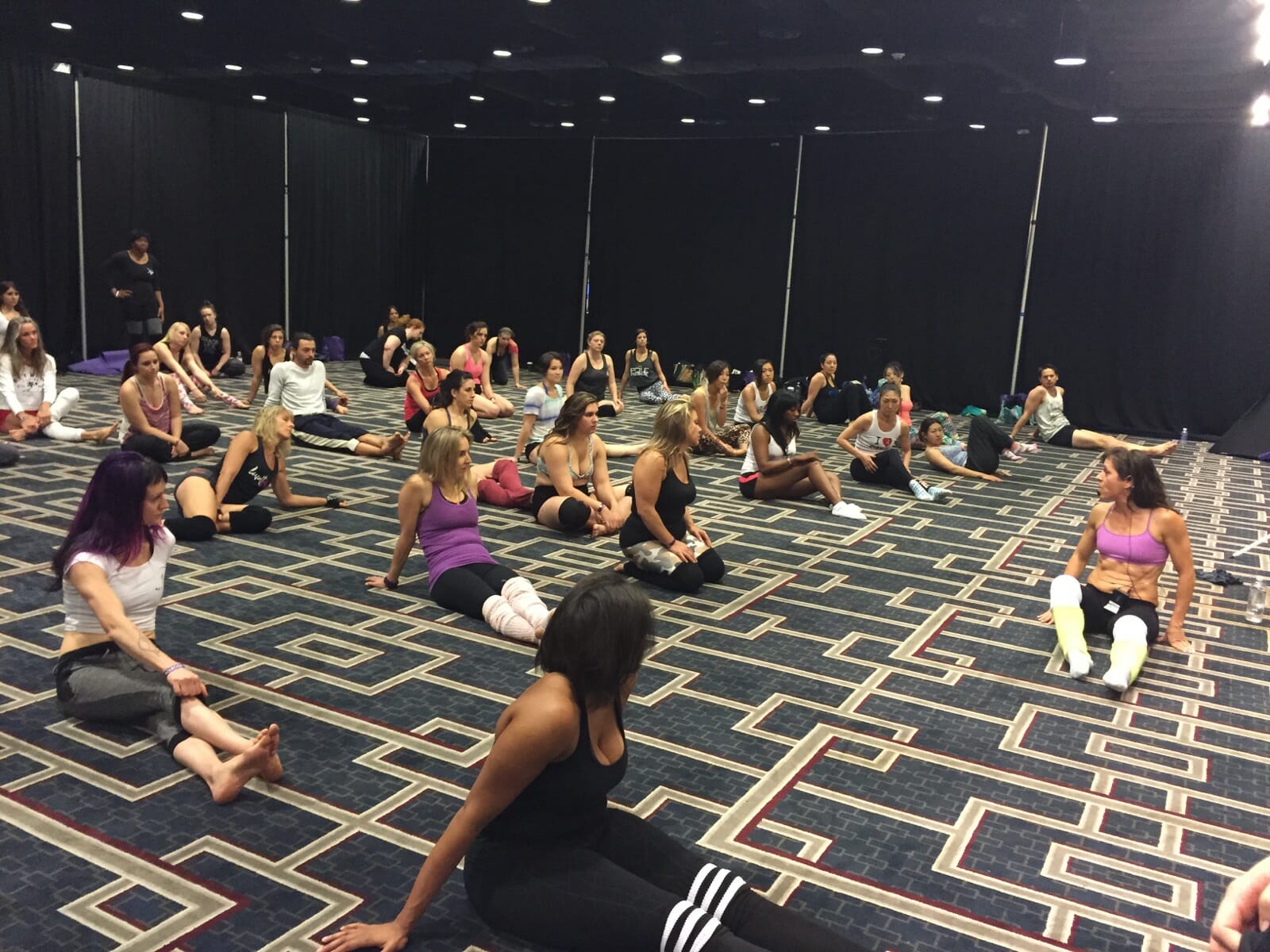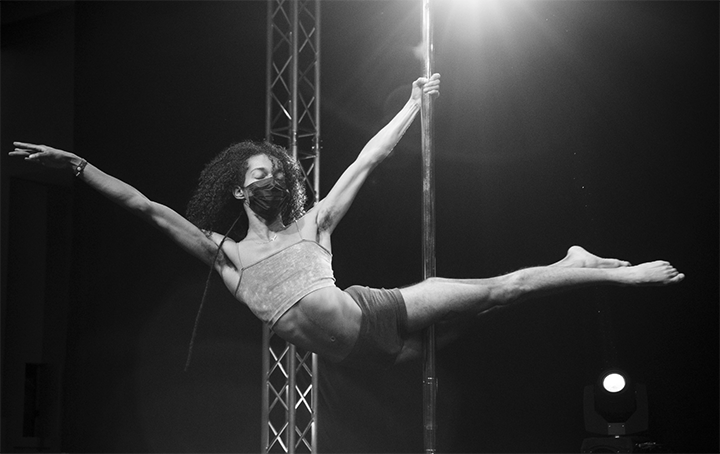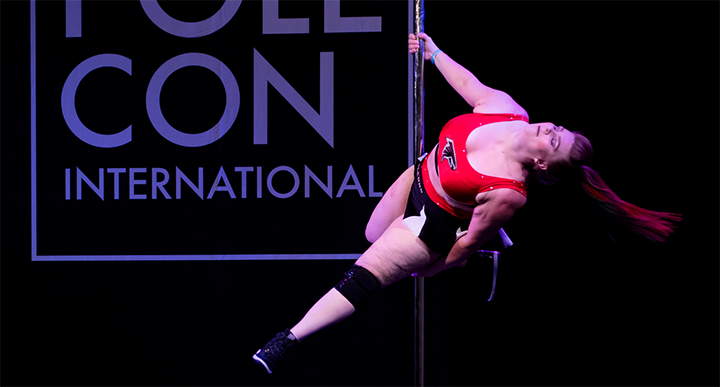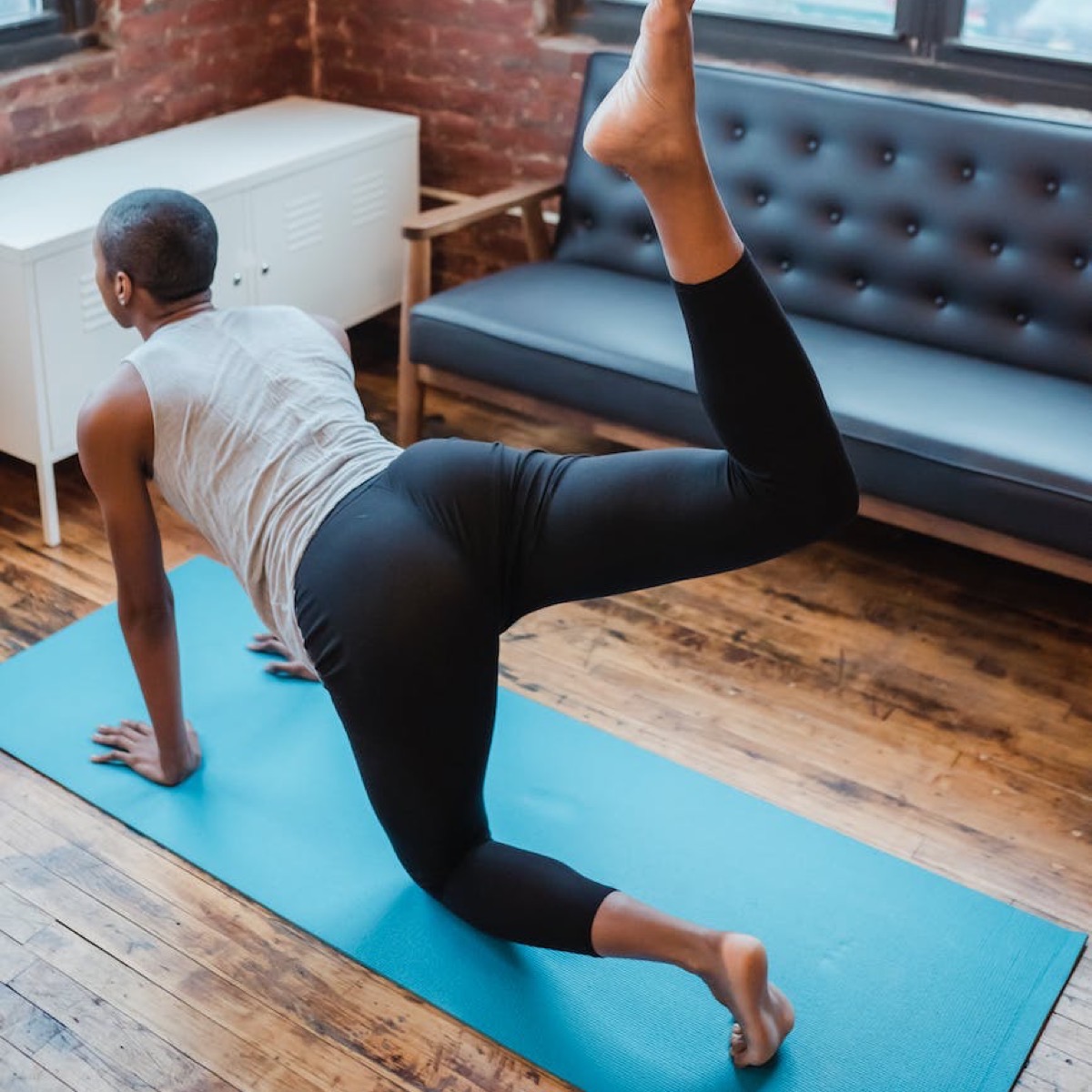I recently saw a reel on Instagram with this tall, thin, gorgeous 20 something young…

Pole Dance Cross Training Activities for People Who Hate the Gym
There are a myriad of ways to cross train for pole that do not involve going to the gym. While I have been a bit of a gym rat in the past, I often find that I am easily bored or disinterested in gym workouts especially when I am by myself. While I try to hit the gym every once in a while for maintenance, I believe that unconventional cross training is fun and feels less like work. I have compiled a short list of activities that build skills transferable to pole and keep those of us who avoid the gym happy.
- Pilates: A physical fitness system created by Joseph Pilates which he coined “contrology.” Pilates involves a series of controlled movements and is said to increase flexibility, strength and endurance. According to wikipedia some of the defining characteristics of Pilates include proper alignment, breathing, building a strong core, coordination and balance. Pilates provides a low impact way to cross train with minimal risk of injury. It can also be practiced with or without a machine. Pilates can be used to cross train for a multitude of activities, and is a known favorite of dancers.
- Rock Climbing: Many pole dancers and aerial artists rock climb for cross training and for fun. Most climb at indoor climbing walls, where patrons can climb up, down, and across man made walls of various difficulty. Climbing challenges one’s strength, endurance, agility and balance. There are several styles of climbing to try and most places have a GroupOn deal for those wanting to give it a try.
- Swimming: Swimming is an excellent low impact aerobic workout for dancers as it is easy on the joints and provides a strength building opportunity for strengthening ones back, legs, arms, and core. Breath control is also another aspect of swimming that can benefit those who want to be able dance for an entire song length or those training for a showcase or competition.
- Dance Classes (Modern, Contemporary, Ballet, Jazz, Hip Hop): Taking dance classes outside of pole can help to improve lines, toe point, and dance technique both on and off the pole. Additionally, when searching for inspiration for floorwork a dance class that meshes with the theme, story, or genre of music used can be just what is needed.
- Capoeira: Capoeira is a martial art originated in 16th century Brazil by Afro-Brazilians. It includes dance, acrobatics, and musical elements. Power, speed, fast movements, balance are important elements in Capoeira. Not only does Capoeira provide good anaerobic exercise and strength building- it also provides inspiration for floor work and low flow.
- Parkour: Parkour was developed from military obstacle course training. The goal of parkour is to get from point A to point B via running, jumping, swinging, flying, vaulting, and rolling in the fastest and most efficient way possible. The activity can be solitary or in groups, with some gyms offering parkour obstacle courses. With all of the swinging, running, and jumping in pole dance- parkour can offer alternative ways for dancers to move from spin to static or wherever they intend to go.
- Gymnastics: Gymnastics is extremely helpful for pole dancers as many come from a gymnastic/dance background. Learning some basic or fundamental skills in gymnastics can help to improve lines, strength, balance, endurance and
- Yoga: Many pole dancers are avid yogis, taking advantage of the increased core strength, flexibility, and restorative benefits of the practice. Yoga can refer to a few different ideas in reference to it including, religion, philosophy, practice, or a particular discipline. Yoga originated in India around 5th century BCE. The practice gained a lot of steam in western cultures during the 20th century. Some of the well known practices of yoga are Classical Yoga, Ashtanga Yoga, Hatha Yoga, Buddhist meditation, Jainism, and Tantra. Whether the meditative and spiritual properties or core/strength/flexibility properties are what you are seeking- yoga can bring a nice balance to your pole journey and your life.
- Liquid Motion®: For anyone hoping to amp up their floorwork, pole work, or dance technique in general liquid motion can help to add a smooth and seamless element to your body’s natural movement. It combines dance theory and sensual movement to guide you through space. In order to participate check with your local pole or dance studios to find out if it is offered. Liquid motion also offers certification courses to gain more information or teach your very own course.
- Zumba: Zumba is a dance fitness class created by Alberto Perez in the 90s. Zumba incorporates dance and aerobic movements set to high energy music. Elements of hip hop, soca, samba, salsa, merengue, mambo and other body weight exercises are included in the workout. Zumba classes can help with toning, strength, and endurance. There are different kinds of Zumba classes for all levels such as: Zumba Gold, Zumba Step, Zumba Toning, Aqua Zumba, Zumba in the Circuit, Zumba Kids, Zumba Senato, Strong by Zumba. These courses can most often be found in your local gym, sometimes employers and universities offer Zumba courses for free!
- Silks/Lyra: Silks and Lyra are the aerial sisters/brothers of pole dance. While we all like to defy gravity (yes that was a wicked reference) there are different skill sets to be gained from cross training with our high flying brothers and sisters. Silks and Lyra activate different muscles more heavily than pole alone might and often require a lot of active active flexibility and grip strength. These elements can help to improve flexibility, grip strength and core activation.
Latest posts by JJ Pole Nerd (see all)
- Dancer’s Block - June 15, 2018
- Pole Dance Cross Training Activities for People Who Hate the Gym - May 25, 2018
- What’s in your Pole Bag? - March 9, 2018


